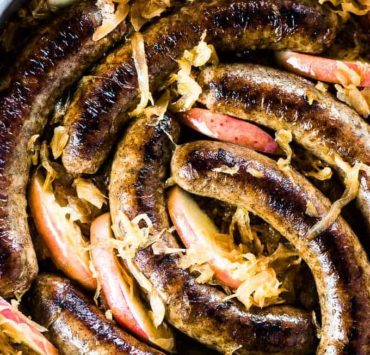The Honest Cooking editorial team handpicks inspiring culinary stories to…
Increase your fruit and vegetable servings per day with these tips, recipe ideas and insights on eating good meat when you do choose to eat. Flexitarian diets are the way to getting your nutrients and pushing the meat industry to be better, for us, the animals and the earth.
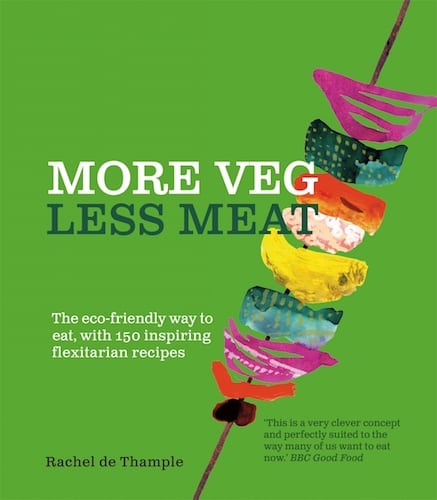
According to food writer, editor, teacher and cook, Rachel de Thample, we eat about twice the amount of meat that we need to and only have of the amount of vegetables that we should. She has set out to change that.
Her new cookbook, debuting November 2018, More Veg less Meat: The Eco-Friendly Way to Eat with 150 Inspiring Flexitarian Recipes
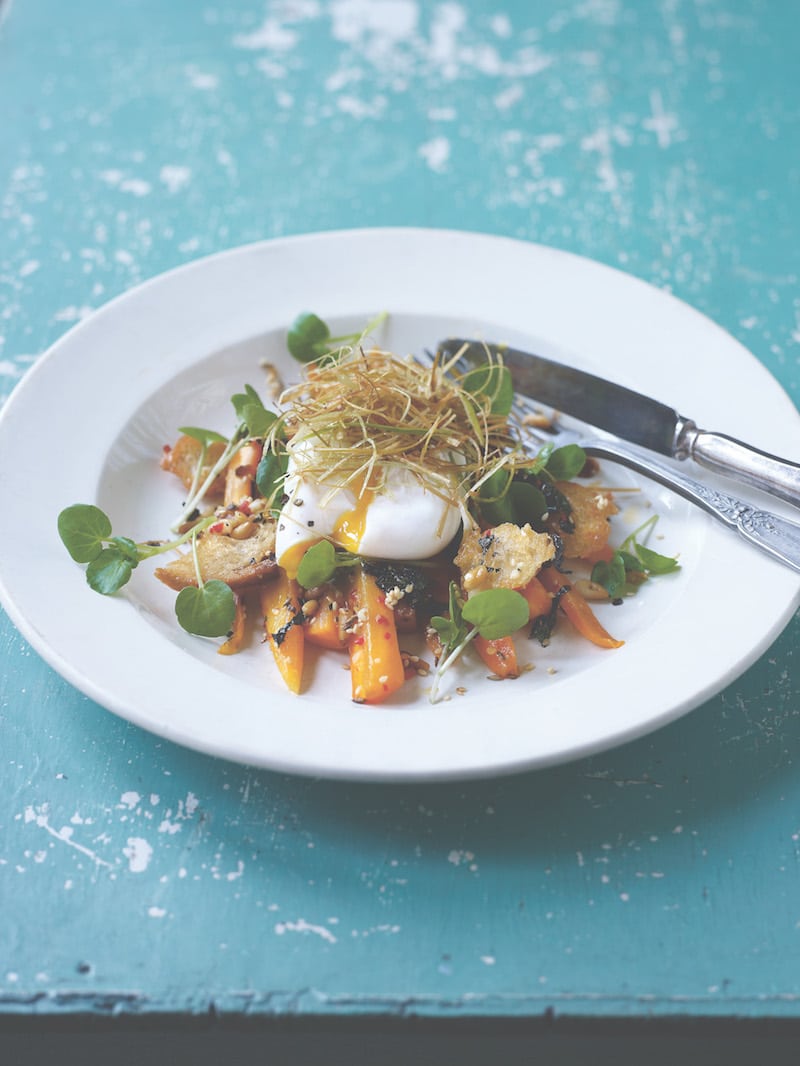 Egyptian carrot and watercress salad with poached egg and crispy leeks
Egyptian carrot and watercress salad with poached egg and crispy leeks
The book is loaded with vegetable-heavy recipes with tips on buying quality produce and using every bit of meat when we do buy it. Rachel also encourages readers to look at their protein intake, it is often much higher than it should. And to take a look at their vegetable intake. Are you getting your 5 servings a day?
Here are a few tips from the book:
- Buy less meat, but don’t count on saving that money for something else. Instead of buying more for less money, use your meat budget to buy high-quality, well-raised meat. That means something a bit different to every person, so do your own research and look for a local farmer who is excited to answer your questions.
- Make a large roast on Sundays. Cook a big cut of meat that is affordable at the start of the week and then serve just one slice overtop of a salad or lots of veggies each night of the week. It’s a perfect serving size to complete a meal without taking over your whole plate. When you get to Friday, have fish! It’s often more sustainable and healthful than meats.
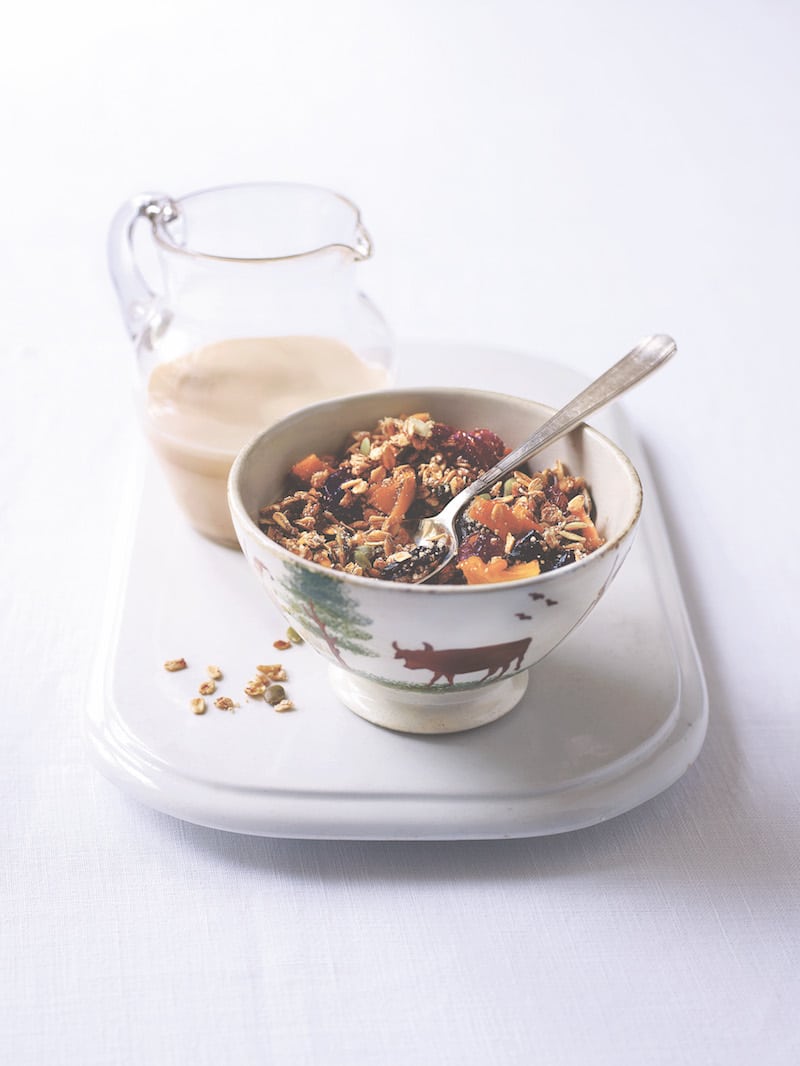 Apple-sweetened granola with almond milk
Apple-sweetened granola with almond milk
- Cooking vegetables can be quick. There’s a whole chapter of the book devoted to 15-minute or less vegetable dishes. So don’t be overwhelmed by the thought of a veggie-loaded meal!
- Use the whole cut. Say you buy a beef rib joint, Rachel has 5 recipes you can make with it, plus instructions for making stock with the bones and even using the drippings to make a pastry dough. Using the whole animal is an important way to make sure we are being sustainable with our meat choices.
- Seek outdoor-reared, grass-fed poultry to get as many nutrients for yourself as possible.
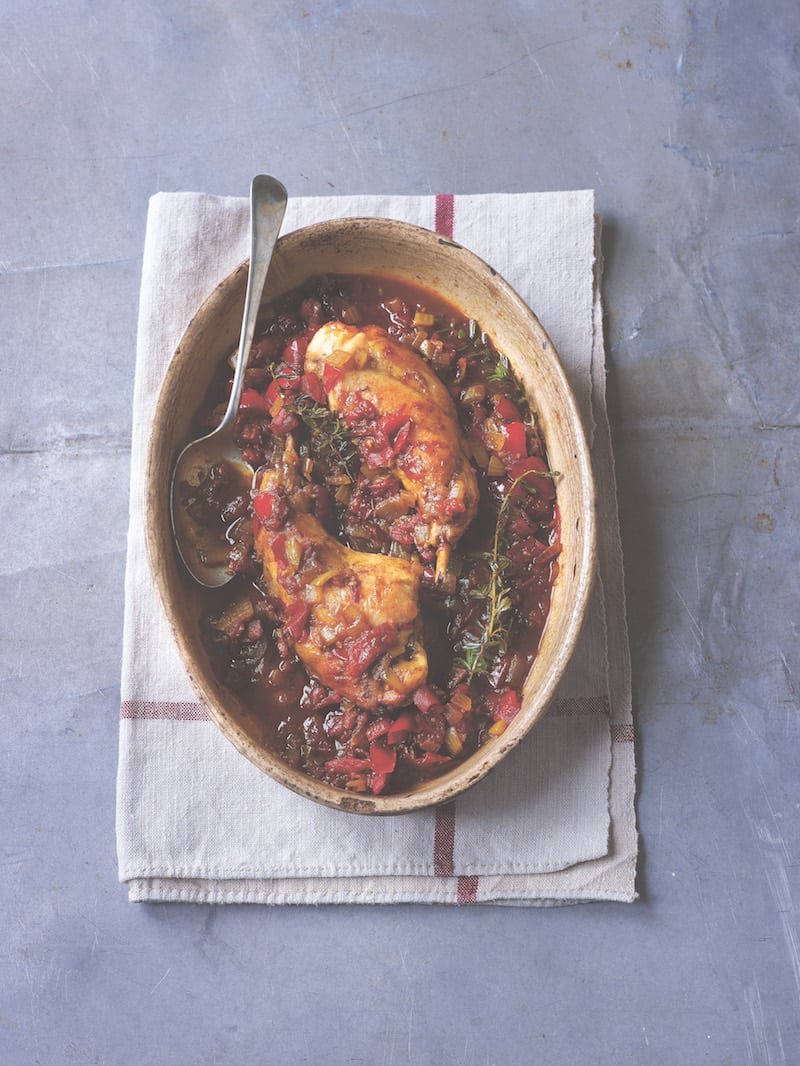 Tuscan rabbit with balsamic tomatoes and thyme
Tuscan rabbit with balsamic tomatoes and thyme
- Look for seasonal fruits and vegetables. Not only will this help with flavor, but it will also help ensure that the produce is fresh and you are more likely to be eating it shortly after it was harvested, so nutrients will be higher.
- Try to eat a variety of types of fish. To help prevent over-fishing, search out sustainably-caught species and switch it up so you aren’t overindulging or threatening a species. (Tuna and salmon are two of the most commonly over-fished seafood options.)
- One egg from a properly fed chicken can give you over 60% of your daily recommended dose of vitamins. It’s a practically perfect fuel food!
Food photography by Peter Cassiday. Kyle Books, an imprint of Octopus Books, distributed in the US by Hachette.
The Honest Cooking editorial team handpicks inspiring culinary stories to share with you that we think are beautiful. We strive to create an inspiring place for culinary exploration, salivating recipes, interesting personalities and stories.




